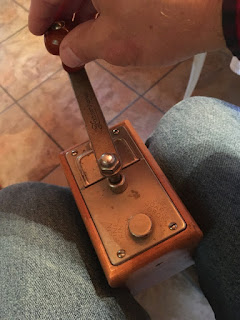How do you know that your coffee beans are fresh? My rules of thumb, based upon twenty years of home roasting and five years of commercial roasting: Raw coffee beans: one to two years. Beans with higher acidity (think brightness) tend to fade after a year A low acid, big-bodied bean, like a traditional Sumatra, is good for a couple of years.
Roasted coffee beans: one to two weeks. Coffee is food, and taste will evolve over 14 days, but within acceptable limits. Coffee beans are best used within a week after roasting.
Ground coffee: Here, the rules vary, depending upon how fine the grind is (a fine grind is exposed to greater air surface area (oxidation). In my coffee shop, I found that espresso needs to be “just ground.” A few hours changes the extraction time. A day can ruin espresso. Coarser grinds are more forgiving. Drip is generally acceptable for a weekend, and french press grind can go for 3-4 days.
Last week, we were headed out for five days to the Upper Peninsula of Michigan. What would I do for grinding coffee? Fortunately, I have the right tool for the job–a Zassenhaus Knee Grinder.
The knob to the left adjusts the grind from fine to coarse. The roasted beans are loaded into the compartment on the right.
The grinder is designed to be operated between the knees, while turning the handle in a circular motion. When the beans have been processed, the grounds are collected in the drawer below.
In my opinion, Zassenhaus makes the finest hand grinders in the world. This one is vintage and acquired via Ebay years ago. The craftsmanship is incredible. No electricity required.









No comments:
Post a Comment